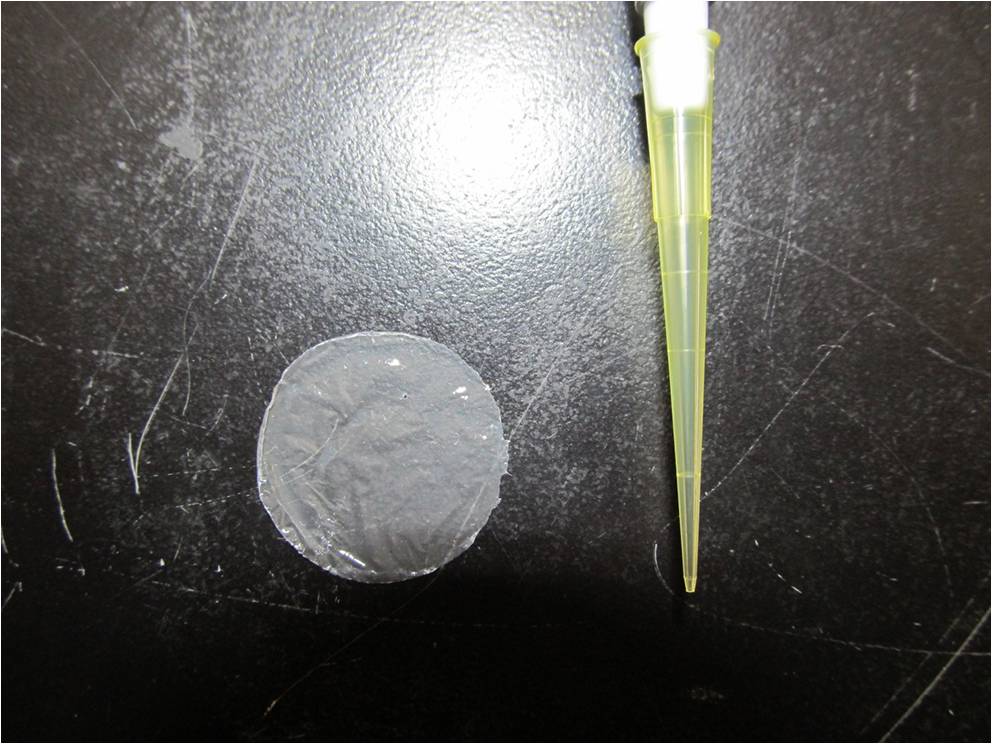Team:Tokyo Tech/Experiment/PHB2
From 2012.igem.org
(Created page with "{{tokyotechcss}} {{tokyotechmenubar}} <br><br> <div class="whitebox"> =P(3HB) production by <I>E.coli</I> & Confirmation of P(3HB)=") |
(→Protocol) |
||
| (5 intermediate revisions not shown) | |||
| Line 4: | Line 4: | ||
<div class="whitebox"> | <div class="whitebox"> | ||
| - | =P(3HB) | + | =Making purified P(3HB) sheets= |
| + | <div id="tokyotech" style=" font:Arial ;left ; font-size: 15px; color: #000000; padding: 30px;"> | ||
| + | |||
| + | We made P(3HB) sheets. To make the sheets, we cultured <I>E.coli</I> JM109 in erlenmeyer flasks at 37°C for 72h. Contact angle is an indicator to represent the strength of the water-repellent. The angle shows the physical properties, especially surface tension. | ||
| + | When contact angle of sheets is larger than 90°, from Young equation, the sheets would have more strong water-repellent by increasing real surface area. Contact angle of P(3HB) sheets is about 100° from literature data. | ||
| + | [[https://2012.igem.org/Team:Tokyo_Tech/Experiment/PHB#D_Polymer_extraction_and_purification Protocol]] | ||
| + | |||
| + | |||
| + | [[File:tokyotech PHB6.png|600px|thumb|center|Fig2-2-4-4-1, P(3HB) sheet]] | ||
| + | ==Protocol== | ||
| + | [[https://2012.igem.org/Team:Tokyo_Tech/Projects/PHAs/index.htm#Application Go to the P(3HB) production page "Application"]] | ||
| + | |||
| + | |||
| + | 1. Move dried cells into an airtight container. | ||
| + | |||
| + | 2. Add chloroform, at rate of 2mg dried cells for 1 ml chloroform. | ||
| + | |||
| + | 3. Incubate and stir the chloroform solution for more than 72 hrs at 20~25℃. | ||
| + | |||
| + | 4. Filter the chloroform solution. | ||
| + | |||
| + | 5. Concentrate by evaporation. | ||
| + | |||
| + | 6. Dropwise the solution in methanol. | ||
| + | |||
| + | 7. Filter the polymer in methanol, and dry the polymer. | ||
| + | |||
| + | 8. Add a little chloroform to dissolve the polymer. | ||
| + | |||
| + | 9. Poured the chloroform solution into a Petri dish. | ||
| + | |||
| + | 10. Dry at room temperature. | ||
Latest revision as of 19:56, 26 October 2012
Making purified P(3HB) sheets
We made P(3HB) sheets. To make the sheets, we cultured E.coli JM109 in erlenmeyer flasks at 37°C for 72h. Contact angle is an indicator to represent the strength of the water-repellent. The angle shows the physical properties, especially surface tension. When contact angle of sheets is larger than 90°, from Young equation, the sheets would have more strong water-repellent by increasing real surface area. Contact angle of P(3HB) sheets is about 100° from literature data. [Protocol]
Protocol
[Go to the P(3HB) production page "Application"]
1. Move dried cells into an airtight container.
2. Add chloroform, at rate of 2mg dried cells for 1 ml chloroform.
3. Incubate and stir the chloroform solution for more than 72 hrs at 20~25℃.
4. Filter the chloroform solution.
5. Concentrate by evaporation.
6. Dropwise the solution in methanol.
7. Filter the polymer in methanol, and dry the polymer.
8. Add a little chloroform to dissolve the polymer.
9. Poured the chloroform solution into a Petri dish.
10. Dry at room temperature. "
"
